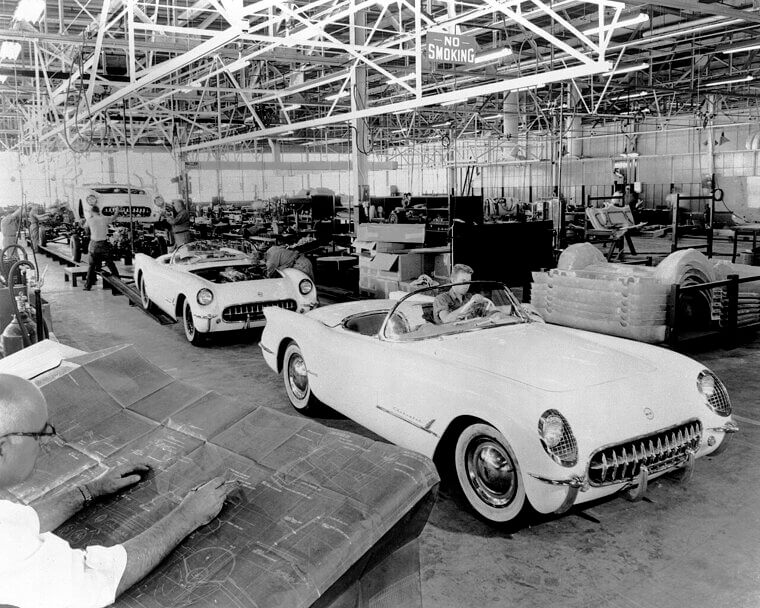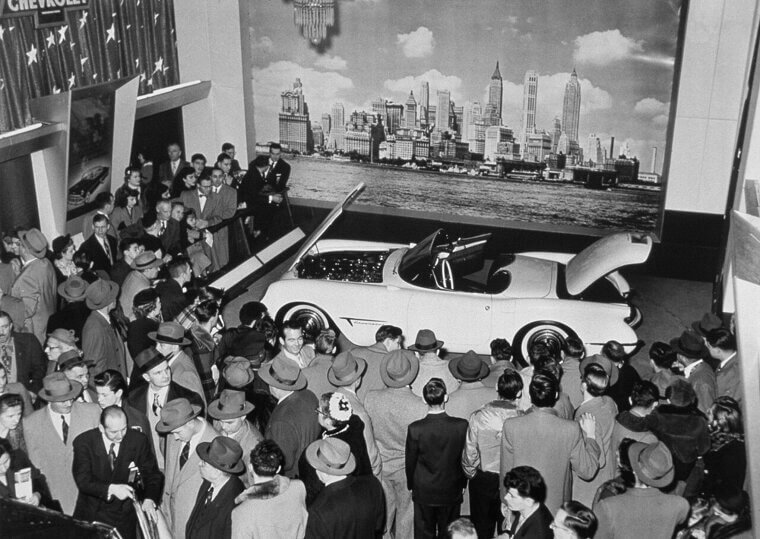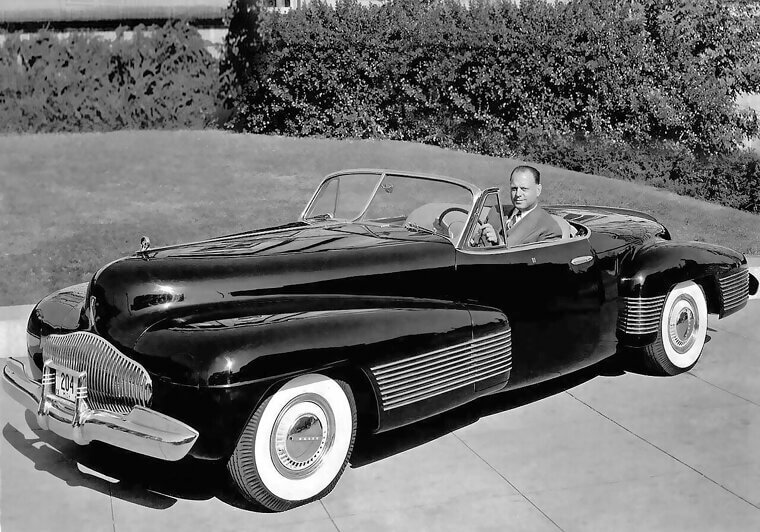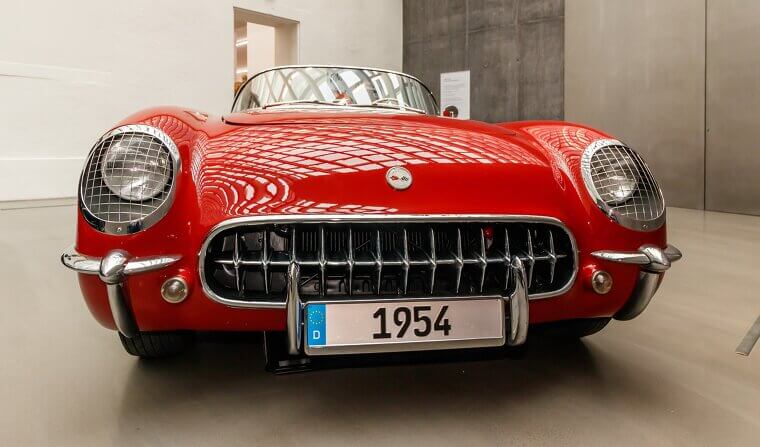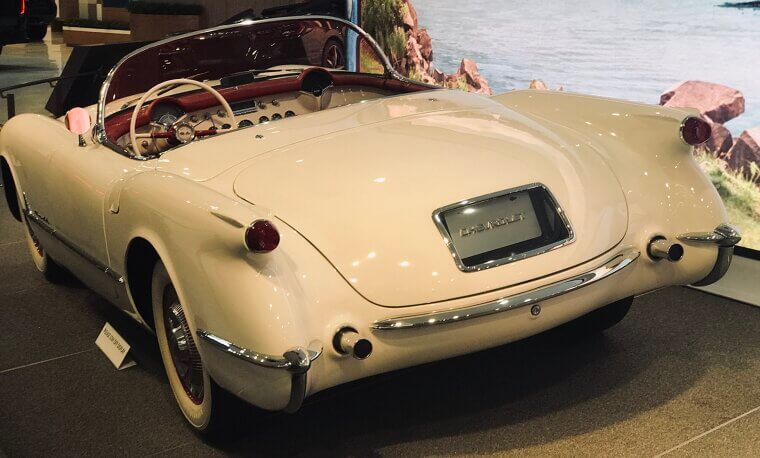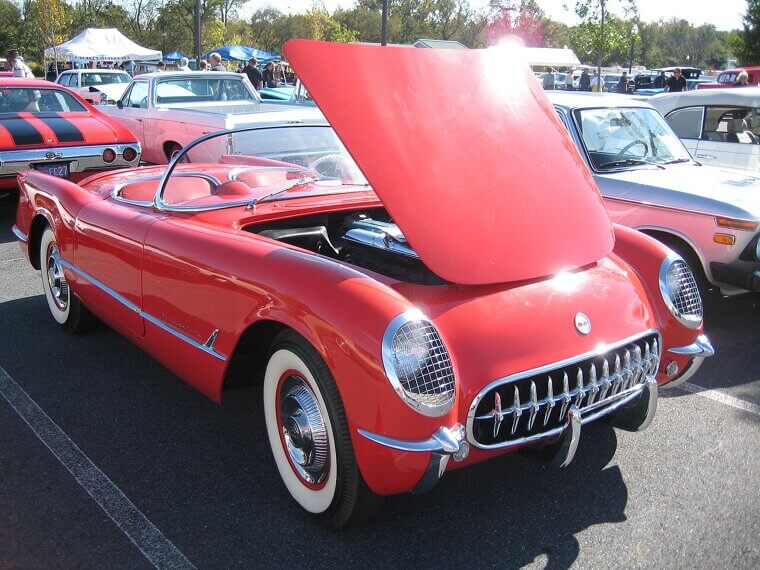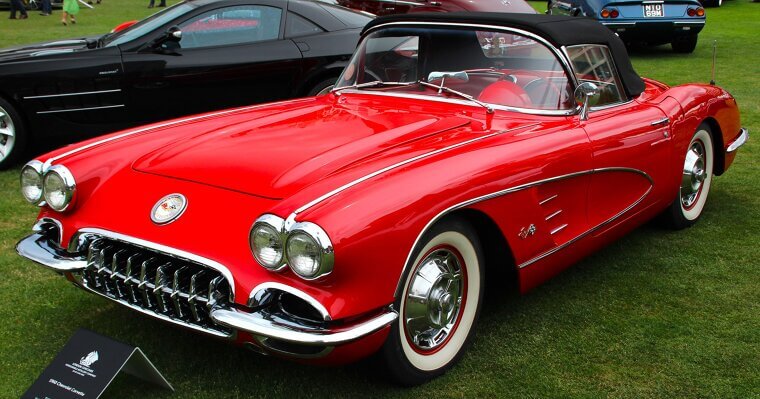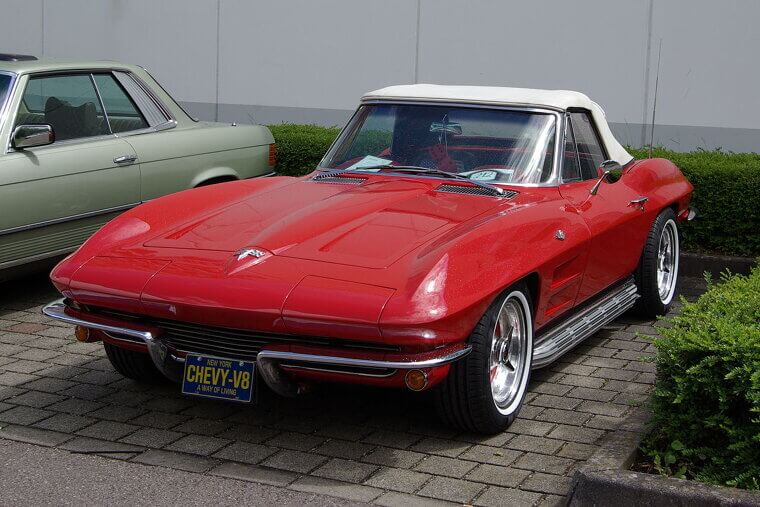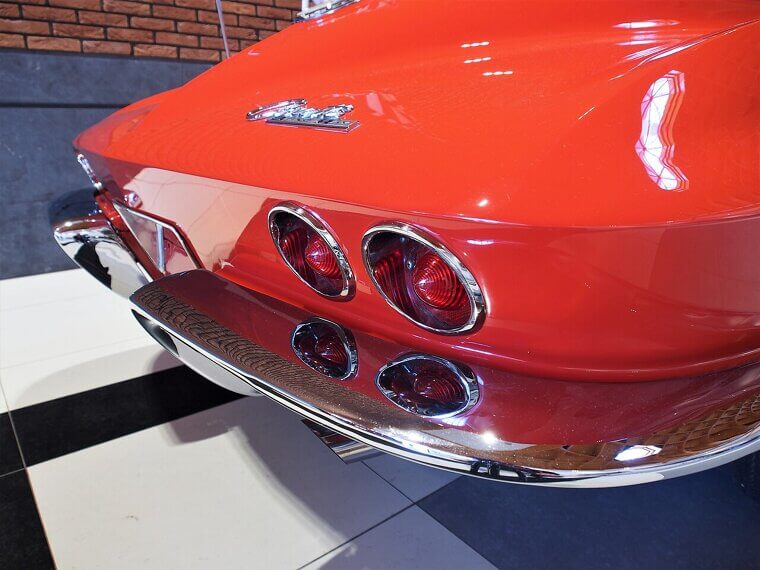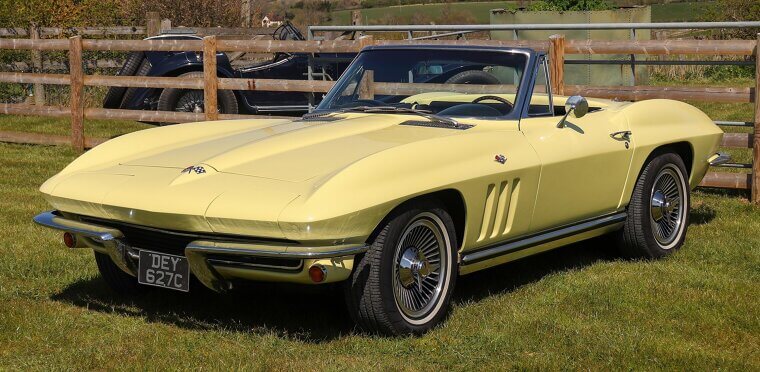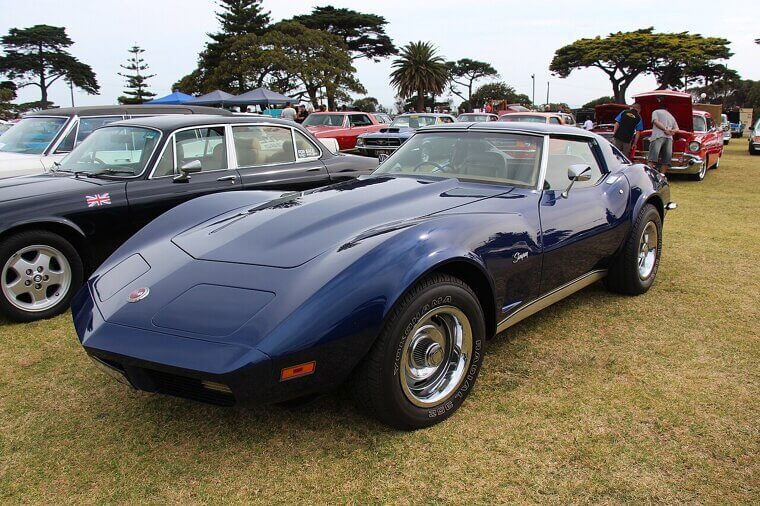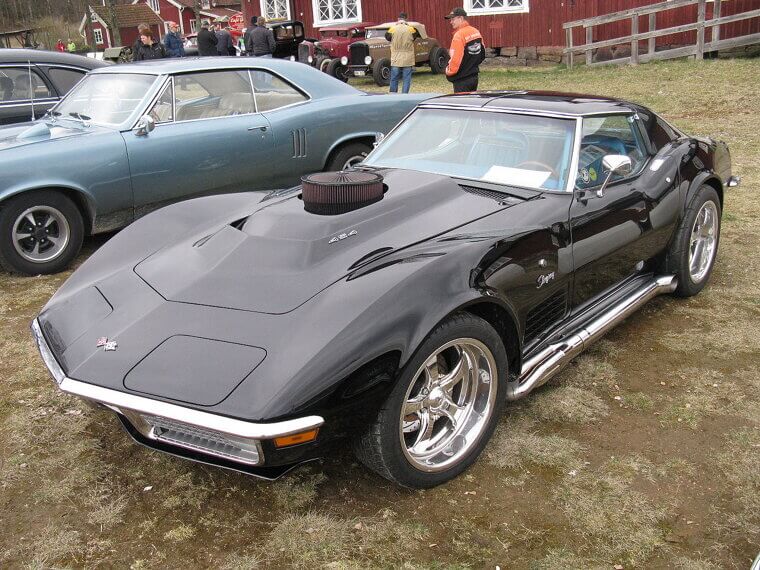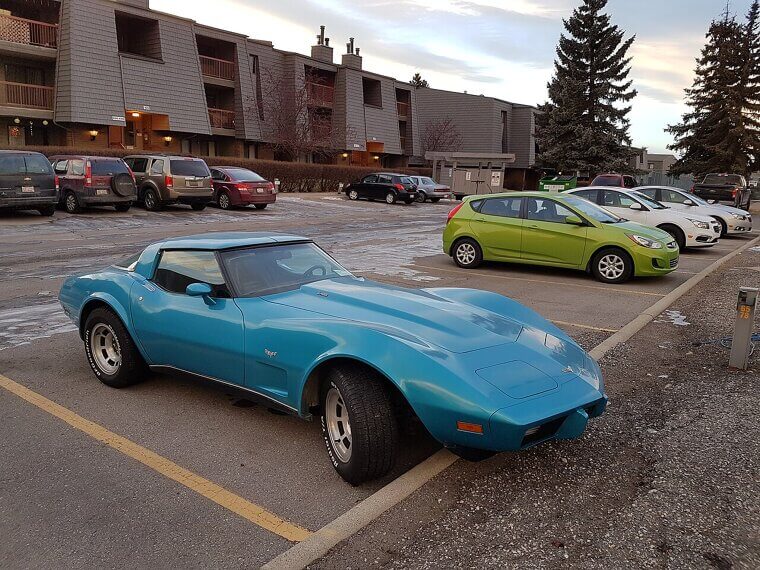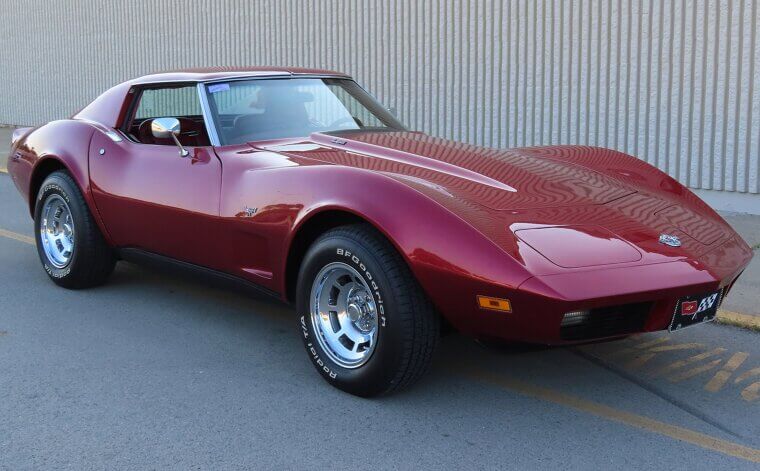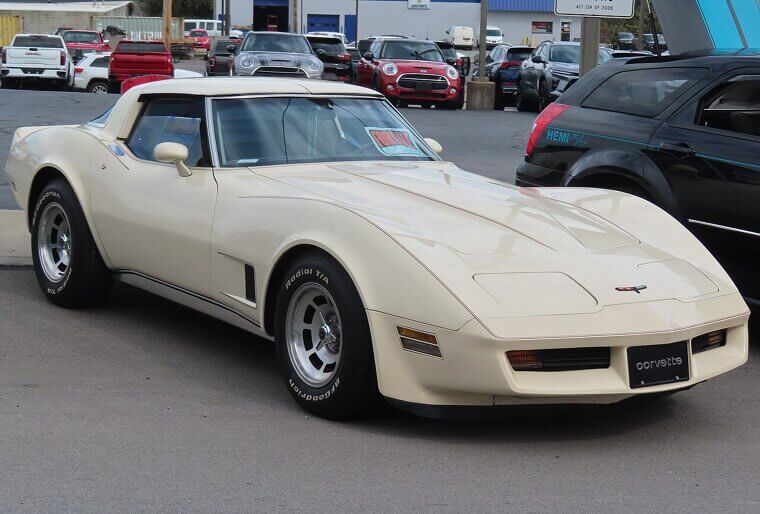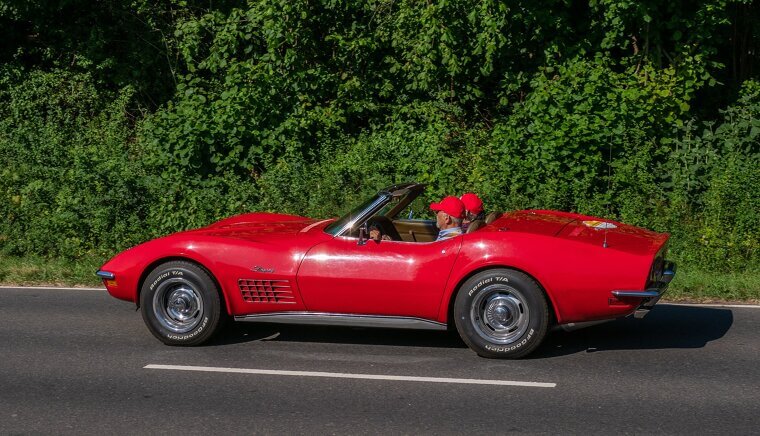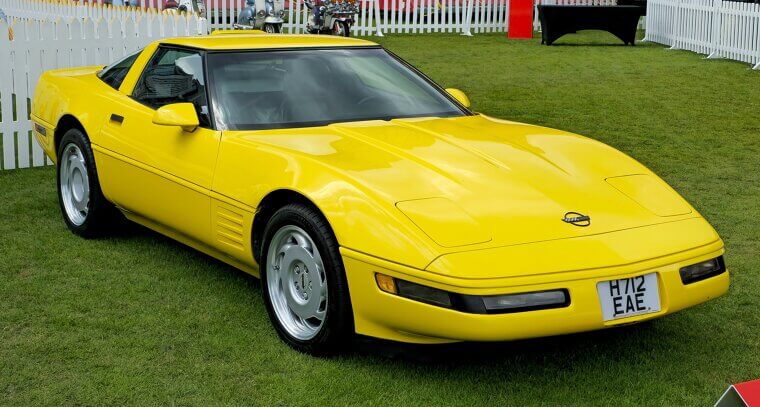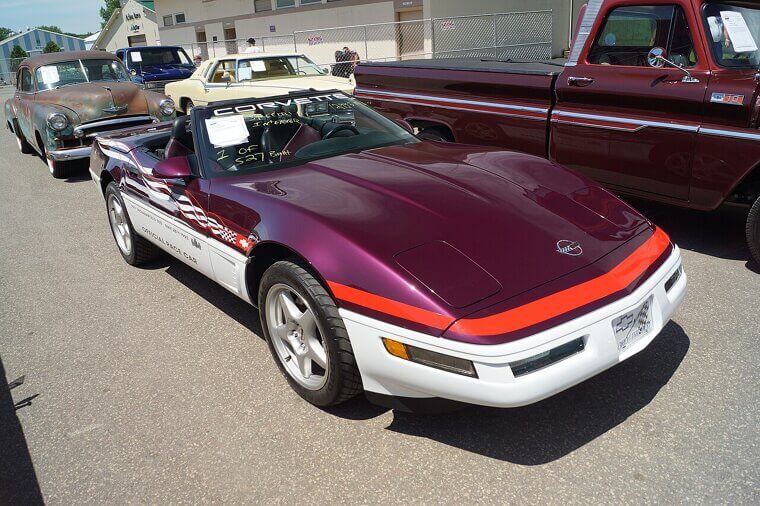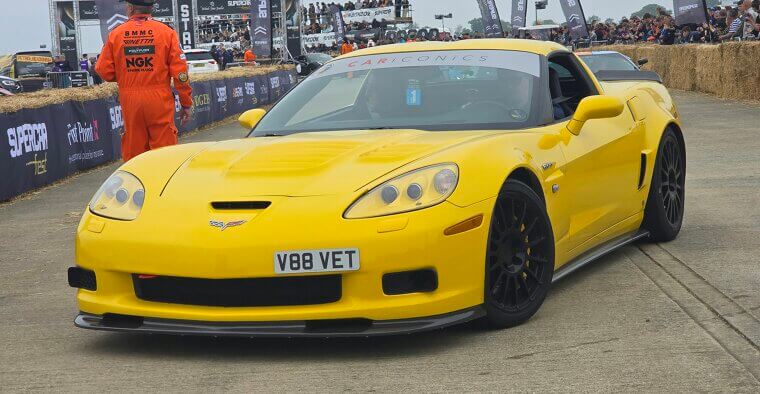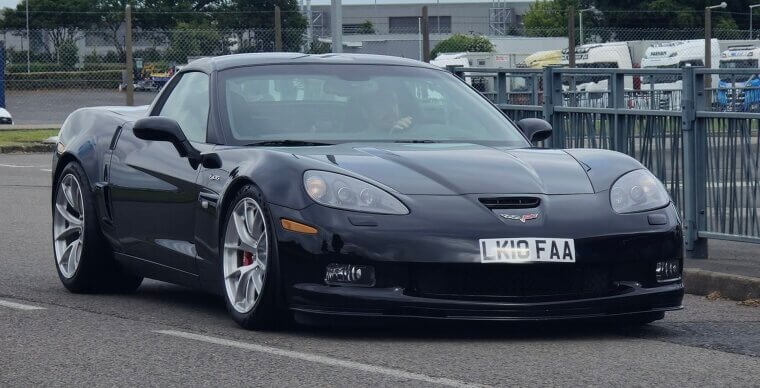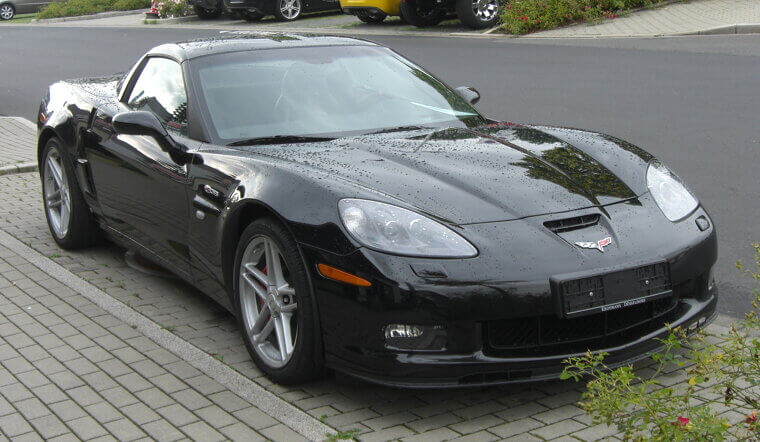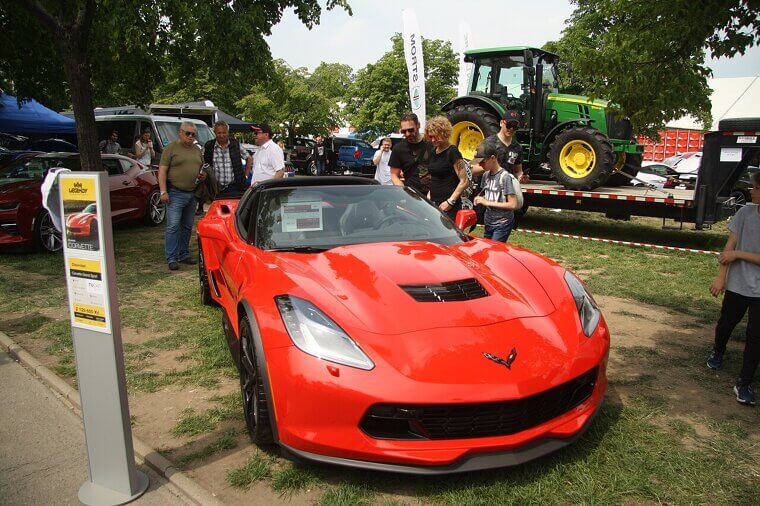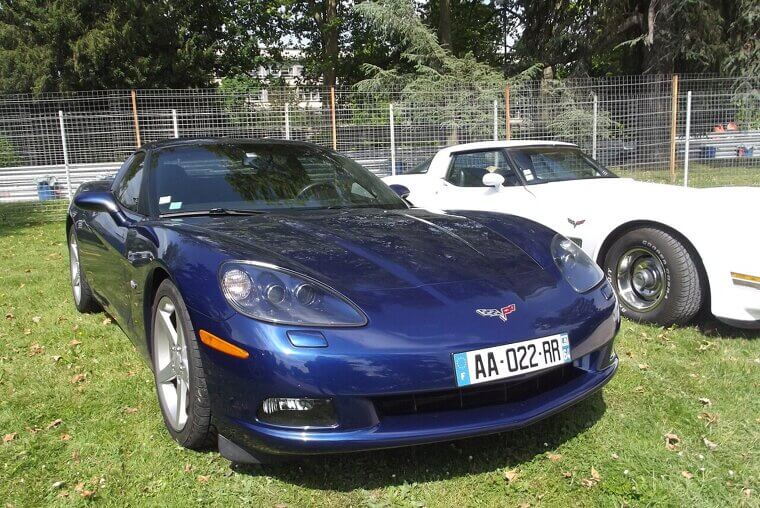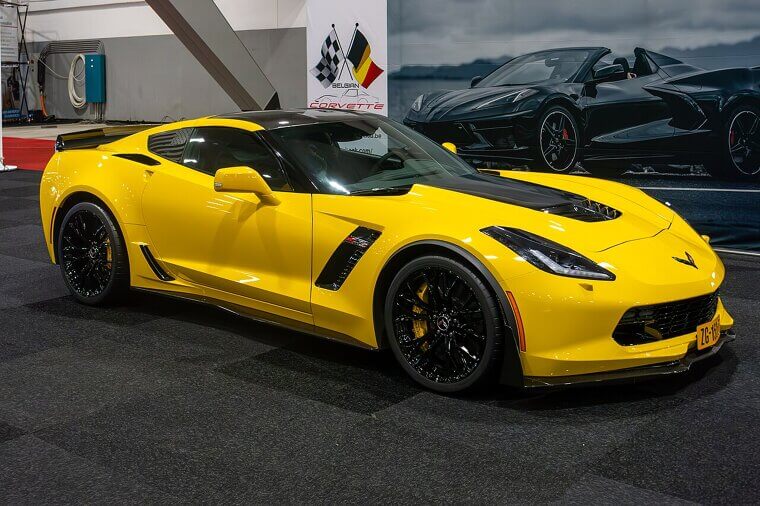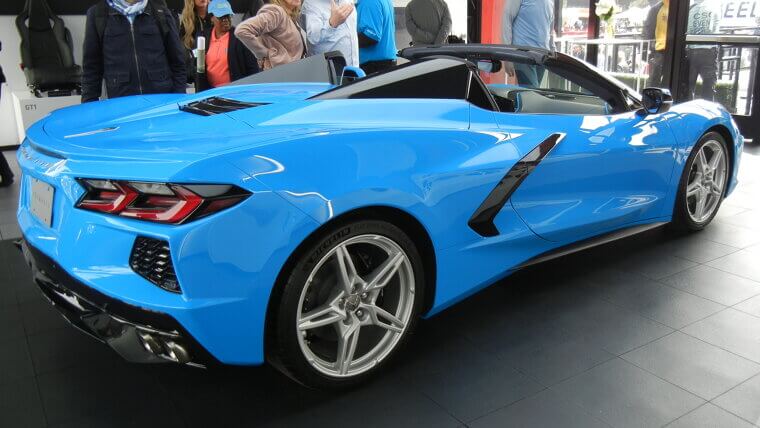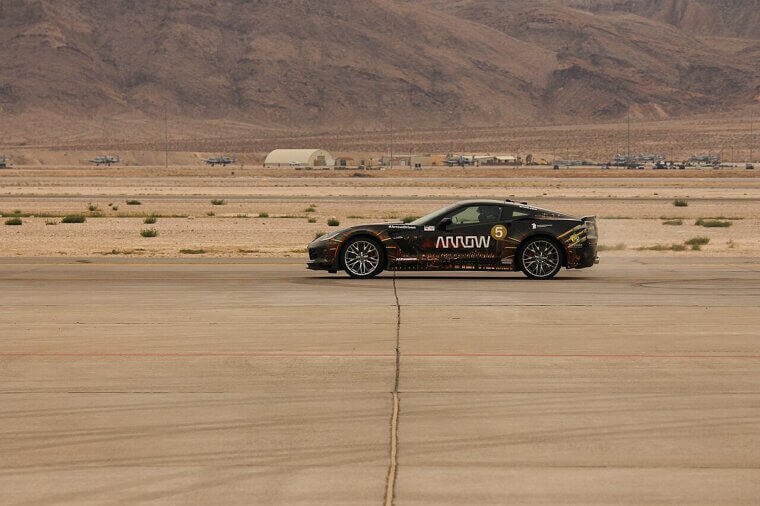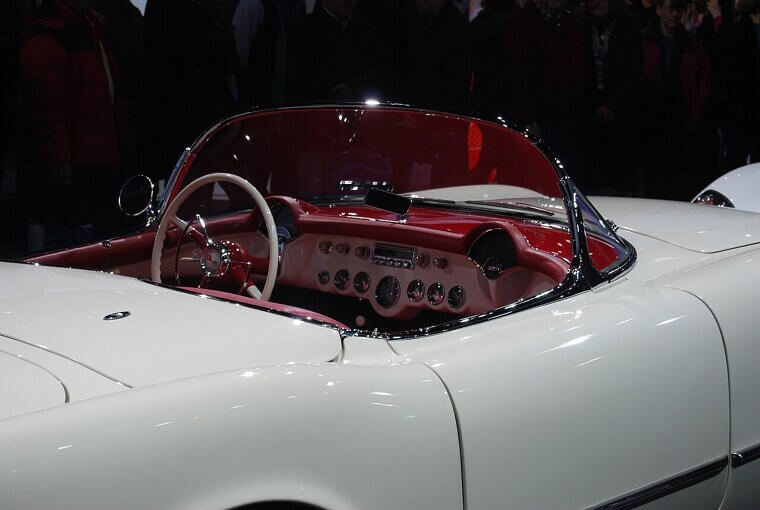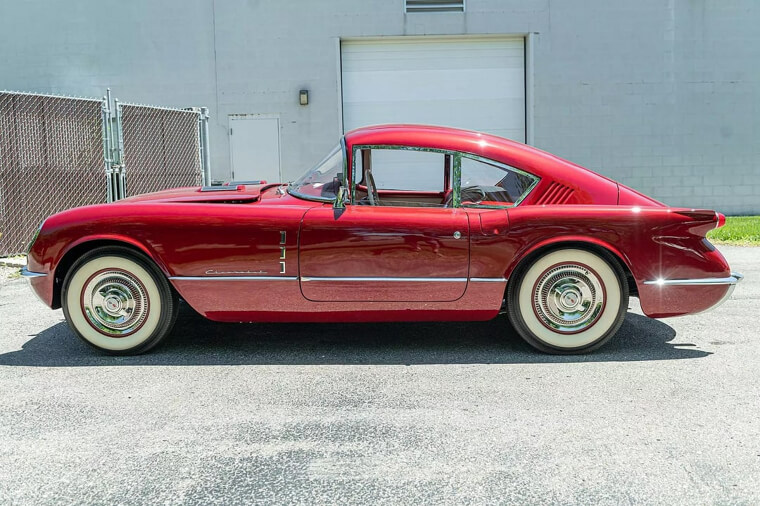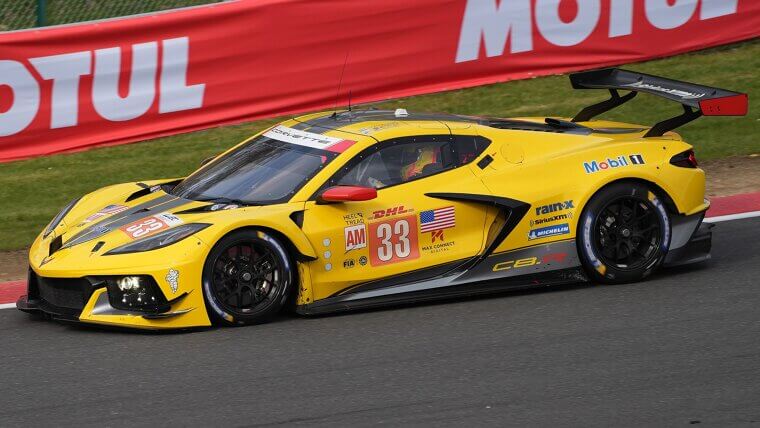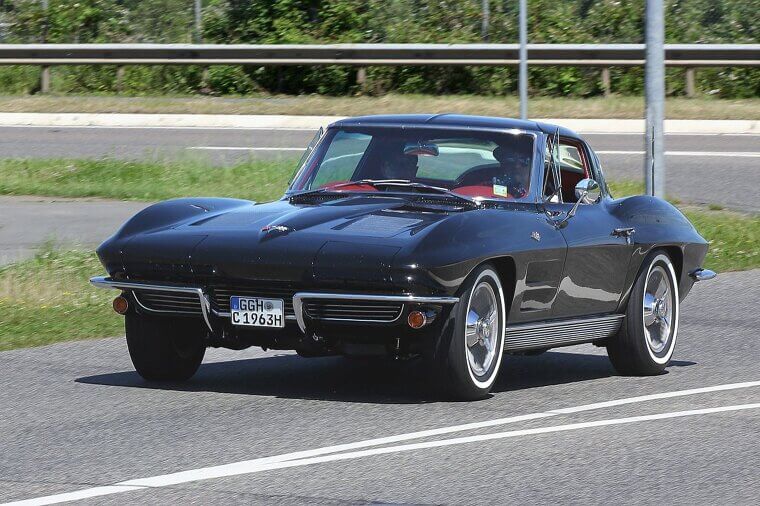Flint, Michigan
The first Corvettes were all manufactured at an automobile factory in Flint, Michigan. Not only was the Corvette a stunning and well-performing car, but it also marked the debut of a fully fiberglass body in the consumer automobile market. To top it off, the car wasn't overly expensive at the time, especially for all that it offered.
The 1953 GM Motorama Car Show
The Chevrolet Corvette made its official debut at the 1953 GM Motorama car show, which took place at the iconic Waldorf-Astoria Hotel in New York. At the time, nobody knew just how successful the car would go on to become.
The Initial Stage
The inaugural Corvette made its debut towards the end of 1953. At the time, only 300 models were created—handcrafted convertibles in a sleek Polo white hue. Almost immediately, there was a demand for more. Not only was the car sleek, stylish, and luxurious, but it had the performance to back it up.
Harley Jarvis Earl (1893-1969)
The Chevrolet Corvette was initially designed by Harley Jarvis Earl. He also served as vice president of General Motors Corporation from 1927 to 1959, making him a prominent figure in the automotive industry. To this day, the Daytona 500 trophy bears his name, a testament to his enduring legacy.
The 1954 Corvette
The 1954 Corvette, in particular, stands out in history as one of the most iconic. It was famously owned by Sophia Loren, an Italian actress at the time. The car also came in various colors, rather than the traditional white.
A Sports Car Performance
In 1955, buyers could choose to equip their Corvette with a powerful 4.8-liter V8 engine. Moreover, a three-speed manual transmission was available, making the Corvette a true sports car. This made it even more appealing to buyers, boosting sales spectacularly.
An Updated Body
In 1956, Chevrolet decided to give the Corvette a bit of a makeover. This included a revamped front end and the elimination of tail lamp fins, resulting in a sleeker appearance and a more aerodynamic design. Scalloped sides were also introduced, adding a distinctive element.
Betty Skelton (1926–2011)
Betty Skelton was one of the most recognized Corvette drivers of the 1950s. She was an exceptional racer and, by collaborating with Corvette, she brought even more attention to the car. She also achieved multiple records in the car and proudly owned 10 of her very own models.
1958–1960
Once again, the Corvette underwent a rather dramatic appearance change in 1958. The front end now featured a dual-headlight setup, as well as a more powerful engine. As the car grew in popularity, more and more celebrities started getting involved with the brand, leading to even further success.
A New Decade and a New Look
To try to keep customers on their toes, Chevrolet decided to focus on the tail end of the Corvette in 1960. As a result, the renowned quad-tail light design was implemented and marked the arrival of the second generation (C2) of Corvettes.
The Sting Ray
There have been many iconic Corvettes released over the years, but the Sting Ray is up there with the best of them. First released in 1963, it marked the debut of the Corvette coupe. Other than its spectacular performance, the Sting Ray stood out for its sloping rear deck, hidden headlights, and independent rear suspension.
An Iconic Tail Design
The Sting Ray models were especially popular for their exclusive split rear window design. Not only did it look cool, but it made the car stand out from anything else on the market at the time.
1965–1967
From 1965 onwards, Chevrolet started to employ the 'bigger is better' philosophy through the release of an optional big-block V8 engine. This new version also included four-wheel disc brakes. Overall, the new version was a resounding success, popular for its fresh design and amped up horsepower.
Mako Shark II 1965
The Mako Shark, first released in 1961 as a concept car, came out with a redesign in 1965 that was fully available to the public. However, only two were ever made, making this Corvette the rarest in the world. To this day, its unique aesthetics have left a lasting impact on the automotive industry.
1968–1971
In 1968, the first C3 coupes were introduced, remaining in production until 1982. They were unique for their T-top removable roof panels. However, the components, including the engine, were largely the same as previous models.
1970
In the early 1970s, the power offered by Corvettes started to slowly decline, mostly due to a decrease in octane requirements in anticipation of the shift to unleaded fuel. Additionally, the bumper design was modified slightly in order to meet new federal safety regulations.
The 25th Year of Corvettes
In 1978, Chevrolet celebrated the Corvette's 25th birthday. To commemorate this milestone, they added a fresh fastback rear end to the model for that year. A limited edition Indy 500 Pace Car was also released.
Fourth Generation Corvette
In the early 1980s, Chevrolet moved to a brand-new manufacturing facility in Bowling Green, Kentucky. In 1982, the final third-generation Corvette was released, with the first fourth-generation (C4) model only coming out two years later.
The Convertible
In 1986, Chevrolet introduced its first Corvette option since 1975. This model was chosen as the second Corvette Indy Pace Car, making its debut at the '86 Indy 500 event.
Corvette ZR1 in 1990
In 1990, the Corvette ZR1 was introduced. The following year, the Kentucky manufacturing facility celebrated the production of its one-millionth Corvette, marking a significant milestone for both Chevrolet and the factory. In 1995, a special 40th edition Corvette was released, and the production of the ZR1 model came to an end.
Fifth Generation Corvette
The C5 Corvette was released in 1997, featuring a complete redesign when compared to earlier models. This model also paved the way for future iterations, inspiring the ever-popular C6 and C7 generations.
Corvette Z06
The Z06 Corvette was first released in 2001 and ultimately replaced the C5's highest-performing model. This car was a fixed-roof coupe, featuring a powerful engine and a number of performance upgrades. Overall, it was a resounding success.
Sixth Generation Corvette
The sixth-generation Corvette was first introduced at the 2004 Detroit auto show. Unlike previous models, it didn't feature the iconic retractable headlights that had been used for the past 40 years. Instead, it adopted fixed units.
The Re-Emergence of the Z06
In 2006, the iconic Z06 was reintroduced. Inspired by the fastback coupe, the new Z06 boasted a powerful LS-series V8 engine, achieving magnificent speed and acceleration. In fact, it could reach 60 mph in 3.4 seconds, making it one of the fastest Corvettes ever.
The Corvette Grand Sport
Chevrolet first introduced the Grand Sport Corvette in 2010 as a replacement car for the Z51 package. Even though this model shared a name with previous limited edition models, it was a completely fresh design. With a modern appearance and the power to back it up, it was an instant success.
Seventh Generation Corvette
In February of 2013, the final C6 Corvette went into production. The all-new C7 model was now on its way, and it was expected to be bigger and better in every way. Once again, the new generation was named the Sting Ray, and there were convertible options available.
The Return of the Z06
In 2015, the Z06 made a welcome return, boasting a powerful 6.2-liter V8 engine with 650 horsepower. In fact, during this period, several popular Corvette models that had been discontinued returned, including the Grand Sport and ZR1.
A Fresh Start
The 2020 Corvette release, known as the C8, featured a number of notable differences. For starters, it had a rear mid-engine setup—the first of any Corvette. It was also the very first Corvette not to feature a traditional manual transmission. Finally, the C8 had a convertible variant with a retractable hardtop.
Corvette C8 Z06
With the ongoing success of the Z06 model, Chevrolet decided to release an all-new C8 Z06 model, available as either a coupe or convertible. More so, they have announced plans to create a hybrid and all-electric version of this car.
The Timless Charm of a Corvette
Even with the numerous changes the Corvette has undergone over its 70 years, there is no denying the car's classic charm. To this day, it is one of the most beloved vehicles of all time and has been owned by some of the biggest names in Hollywood, including Steven Spielberg, Meryl Streep, Ben Affleck, and Leonardo DiCaprio.
An American Icon
Since its debut in 1953, the Corvette has become a symbol of freedom, innovation, and thrill. Not only has it featured in numerous films and iconic television shows, but it is also a household name, known for its smooth ride, powerful engine, and sleek design.
Generational Evolution
The Corvette has spanned 8 generations, making it one of the longest-running models in the world. Over the years, it has transformed from a stylish roadster to a world-class supercar, winning some of the most iconic races across the globe. It has even outshone industry giants, such as Ferrari and Porsche.
A Design Legacy
The Corvette has become famous for its sleek fiberglass body, hidden headlights and aggressive design, all making it instantly recognizable.
Performance Milestones
In the 1950s, the Corvette featured a small-block V8. Nowadays, it features an immensely powerful mid-engine, showcasing the brand's fluidity. Chevrolet never stopped improving the car, constantly aiming for perfection.
Cultural Impact
Over the years, the Corvette has become a cultural icon. In a way, it symbolizes aspiration and success, as it is one of the most highly sought-after vehicles in the world.

